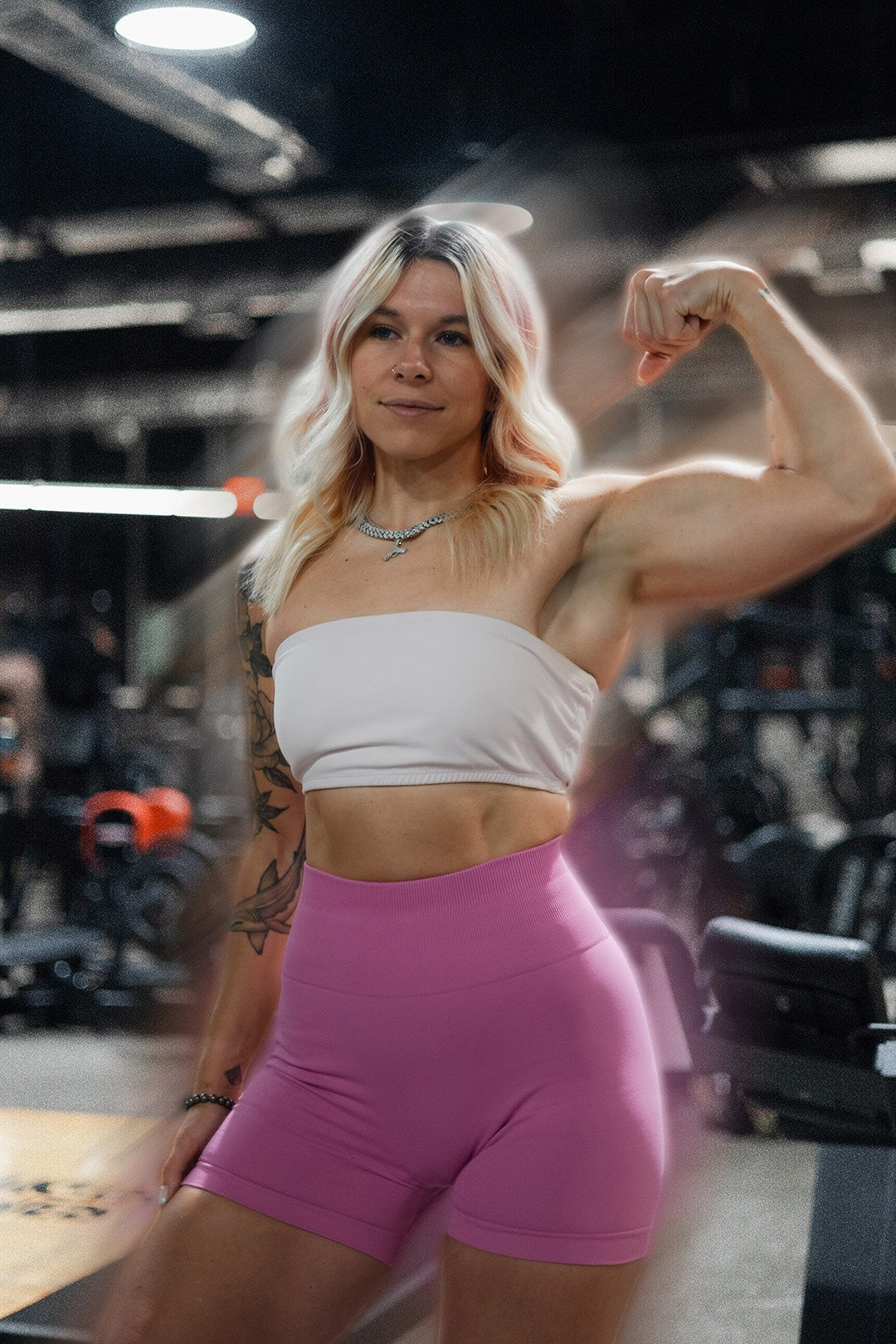We’ve all been there: standing at the gym, unsure where to start or feeling like everyone is watching. The gymtimidation is real. But don’t worry—gym anxiety is more common than you think. It can even happen to those who have been going for years, but the good news is that it’s completely conquerable.
With the right strategies and mindset, you’ll go from feeling out of place to walking in with confidence. Let’s dive into how you can do just that.
What's Gym Anxiety?
Gym anxiety is the nervousness or self-consciousness many people feel when stepping into a gym environment. It often stems from fear of judgment, unfamiliarity with equipment, or not knowing where to start. This can lead to overthinking, skipping workouts, or even avoiding the gym altogether.
But here’s the truth: most gym-goers are focused on their own routines, not on judging others. With the right mindset and preparation, you can overcome gym anxiety and start building the confidence to crush your fitness goals.
How To Overcome Gym Anxiety
From gaining knowledge to finding your support system, there are simple steps you can take to overcome gym anxiety and achieve your fitness goals.
Get Familiar with Strength Training Principles
Strength training isn’t just about picking up weights—it’s about understanding how it works. Four key principles can help you start strong: specificity, variation, individualization, and progressive overload.
- Specificity: Focus on exercises that align with your goals. Want to master squats? Incorporate enough squat variations instead of unrelated leg exercises.
- Variation: Keep your routine fresh with different exercises to target muscles from various angles and avoid boredom.
- Individualization: Your journey is unique. Don’t compare yourself to others—progress at your own pace.
- Progressive Overload: Gradually increase weight, reps, or intensity to keep challenging your muscles and avoid plateaus.
By applying these principles, you’ll build a more effective and enjoyable strength training routine.
Create a Workout Plan Before You Go
Walking into the gym with a workout plan makes a world of difference. Start by setting clear, achievable goals—like building stronger legs or improving upper body tone. Then, structure your routine around these goals with specific exercises, sets, and reps.
Incorporate training splits to organize your workouts. For example, dedicate one day to legs and another to back and biceps. This focus prevents overwhelm and ensures balanced progress. Having a plan not only boosts confidence but also helps you stay consistent.
Beat the Crowd
Peak hours can be intimidating, especially for beginners. If possible, visit the gym during quieter times, like mid-morning or late afternoon. A less crowded gym means more space, less pressure, and easier access to equipment.
Get Comfortable: A Gym Tour Could Be Your Secret Weapon
Many gyms offer tours for new members. Take advantage of this! Familiarizing yourself with the layout can ease those first-time jitters and help you feel more at home. You’ll know exactly where to find the machines, free weights, and stretching areas.
If a gym tour isn't an option, read and learn about how to use the gym machines so you can step into the gym with more confidence.
Find a Buddy, Boost Your Confidence
Everything feels easier with a friend by your side. Partnering up with someone—whether it’s a workout buddy or a trainer—can make the gym feel less intimidating. Plus, it’s a great way to stay accountable and motivated.
Progress, Not Perfection
Remember, no one becomes a pro overnight. Focus on small victories: completing your first workout, lifting slightly heavier weights, or just showing up consistently. Every step you take brings you closer to your fitness goals.
FAQ
Does going to the gym reduce anxiety?
Yes, regular exercise can significantly reduce anxiety. Physical activity releases endorphins, which are natural mood boosters. Strength training and cardio can also help improve sleep, reduce stress, and provide a sense of accomplishment—all of which contribute to better mental health. Plus, establishing a routine can give you a sense of control and help manage anxious feelings over time.
How often should I work out as a beginner?
A good starting point is 3-4 days per week. This gives your body time to recover while allowing you to build a consistent habit. Focus on full-body workouts or alternate muscle groups to avoid overtraining. Remember, quality is more important than quantity—proper form and consistency are key.
How do I stay consistent at the gym?
Consistency is built through small, sustainable habits. Set realistic goals, create a schedule that fits your lifestyle, and track your progress. Celebrate small wins, and remember that building a routine takes time—patience is key. Surround yourself with supportive people or find a gym buddy to stay motivated!
What lifting gear should beginners use?
Beginners don’t need a lot of gear to start, but a few essentials can improve your experience and safety:
- Lifting Straps: Help you maintain a strong grip on heavy weights.
- Wrist Wraps: Provide support for your wrists during pressing or pushing exercises.
- Supportive Lifting Belt: Once you start lifting heavier, a belt can support your lower back during squats and deadlifts.
Start simple and invest in quality gear as you progress!
Ready to Conquer Gym Anxiety?
It’s time to step out of your comfort zone and embrace your fitness journey. Equip yourself with UPPPER gear designed to make you feel unstoppable—from Lifting Straps to Knee Sleeves—we’ve got your back.
Take that first step today. Your future self will thank you.
>> SHOP UPPPER <<

